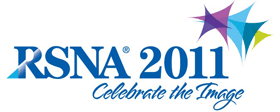
Abstract Archives of the RSNA, 2011
Claudia Jane Kasales MD, Presenter: Nothing to Disclose
Chengwu Yang PhD, Abstract Co-Author: Nothing to Disclose
Tao Ouyang MD, Abstract Co-Author: Nothing to Disclose
Christine Marie Peterson MD, Abstract Co-Author: Nothing to Disclose
Nabeel Imtiaz Sarwani MD, Abstract Co-Author: Nothing to Disclose
Rafel Tappouni MD, Abstract Co-Author: Nothing to Disclose
Michael Andrew Bruno MD, Abstract Co-Author: Nothing to Disclose
To develop and evaluate a scale to measure the quality of radiology reports generated by residents and apply it to assess the effect of a dedicated radiology resident training session on the quality of reports
A seven item scale (QoRRS) was developed to measure the quality of radiology reports. Each of these seven items measures a different aspect of report quality (e.g., appearance, organization, readability, etc.) on a one (worst) to five (best) scale. Twenty-five diagnostic radiology residents in their 2nd, 3rd and 4th residency year in a university program participated in a dedicated training session focused on the generation of radiology reports. Using the new QoRRS, five attending radiologists graded in a blinded fashion 804 randomly selected reports (403 before training, 401 after training) generated by the residents. Internal consistency reliability and factorial validity of the new scale were assessed by Cronbach's alpha and confirmatory factor analysis (CFA). The effect of dedicated training on the quality of reports was assessed by multiple regression, controlling for possible confounding effects of radiologic study type, reviewer and residency year.
The newly developed QoRRS has excellent internal consistency reliability (Cronbach's alpha=0.95). CFA results support the proposed uni-dimensional factor structure of this new scale. (Each of the seven items had factor loading greater than 0.8 on the single factor and p<0.001, with adequate model fit indices.) These results indicate that all of the seven items are measuring a single construct, namely quality of report, although from different aspects. Multiple regression analysis indicates that after controlling for study type, reviewer and residency year, dedicated training improves the quality of reports (mean score improved from 75% to 80%, p<0.001).
The newly developed QoRRS is a reliable and valid measure of radiology reports generated by residents, and a dedicated radiology resident training session can improve the quality of their radiology reports.
No scale exists to measure the quality of radiology reports generated by residents; dedicated training sessions improve the quality of resident generated reports.
Kasales, C,
Yang, C,
Ouyang, T,
Peterson, C,
Sarwani, N,
Tappouni, R,
Bruno, M,
Development and Application of Quality of Radiology Report Scale (QoRRS) to Assess the Effect of a Dedicated Radiology Resident Training Session. Radiological Society of North America 2011 Scientific Assembly and Annual Meeting, November 26 - December 2, 2011 ,Chicago IL.
http://archive.rsna.org/2011/11009267.html

